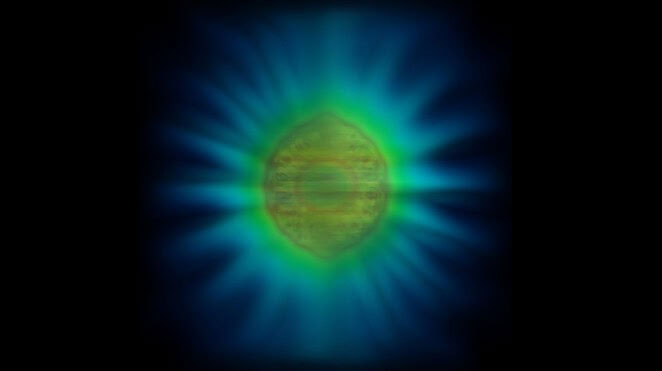Based on new theory, physics 'captures' a photon for the first time
New research opens up ways to improve sensors as well as quantum computing.
By understanding the interactions between photons and matter, scientists can find new paths in quantum physics and materials science, leading to new nanophotonic technologies , optimizing pathogen detection or controlling chemical reactions.
In new research, researchers at the University of Birmingham have explored how photons emitted by atoms or molecules are affected by their surroundings. They have also photographed them : something that has never been done before in physics.
The results of the report were published in the journal Physical Review Letters.

A new theory that explains how light and matter interact at the quantum level has allowed researchers to "image" a single photon for the first time - (Source: Dr Benjamin Yuen).
' The geometric structure of the medium determines the interaction of photons with matter ,' the authors write.
' The geometric structure and optical properties of the medium have a profound effect on how the photon is emitted, including determining the shape, color of the photon, and even its likelihood of survival ,' added co-author Angela Demetriadou.
In the study, the team built a theoretical model that classifies the myriad interactions of light into distinct groups. This model describes the interaction between a photon and its source, as well as how the energy from this interaction propagates away.
Photons are objects of study that belong to quantum mechanics - that is, they can be described as both waves and particles. However, these descriptions cannot fully capture the characteristics of photons as well as other elementary particles.
This wave-particle duality has made it difficult to determine the exact shape of individual subatomic particles.
' Our calculations have helped turn a seemingly unsolvable problem into a computationally tractable one ,' said lead author Benjamin Yuen. ' As a by-product of our model, we were able to create an image of the photon – something that had never been seen before in physics .'
' This work helps us to improve our understanding of the energy exchange between light and matter, and to better understand how light is emitted into the near and far surroundings ,' said Mr Yuen.
' A lot of information was previously considered "noise" – but now we can decode it and make use of it. By understanding it, we have the foundation to be able to design interactions between light and matter for future applications, such as better sensors, improved photovoltaic cells, or quantum computing '.
- A new kind of light creates a physical breakthrough
- Can't travel through time
- A theory being tested can cause textbooks to be rewritten
- The dark photon hunt decodes the greatest mystery of modern physics
- Scientists discover a photon traveling back in time
- November 25, 1915 - Albert Einstein's research on general relativity is published
- Ghost physics: Signal faster than light
- Fantasy about Santa's magic ability
- Theory: Time can become a dimension of space!
- Time travel is a fantasy or quite realistic?
- Time travel is real, this is the person holding this extraordinary record
- The new hypothesis is controversial about gravity
 'Fine laughs' - Scary and painful torture in ancient times
'Fine laughs' - Scary and painful torture in ancient times The sequence of numbers 142857 of the Egyptian pyramids is known as the strangest number in the world - Why?
The sequence of numbers 142857 of the Egyptian pyramids is known as the strangest number in the world - Why? History of the iron
History of the iron What is alum?
What is alum?